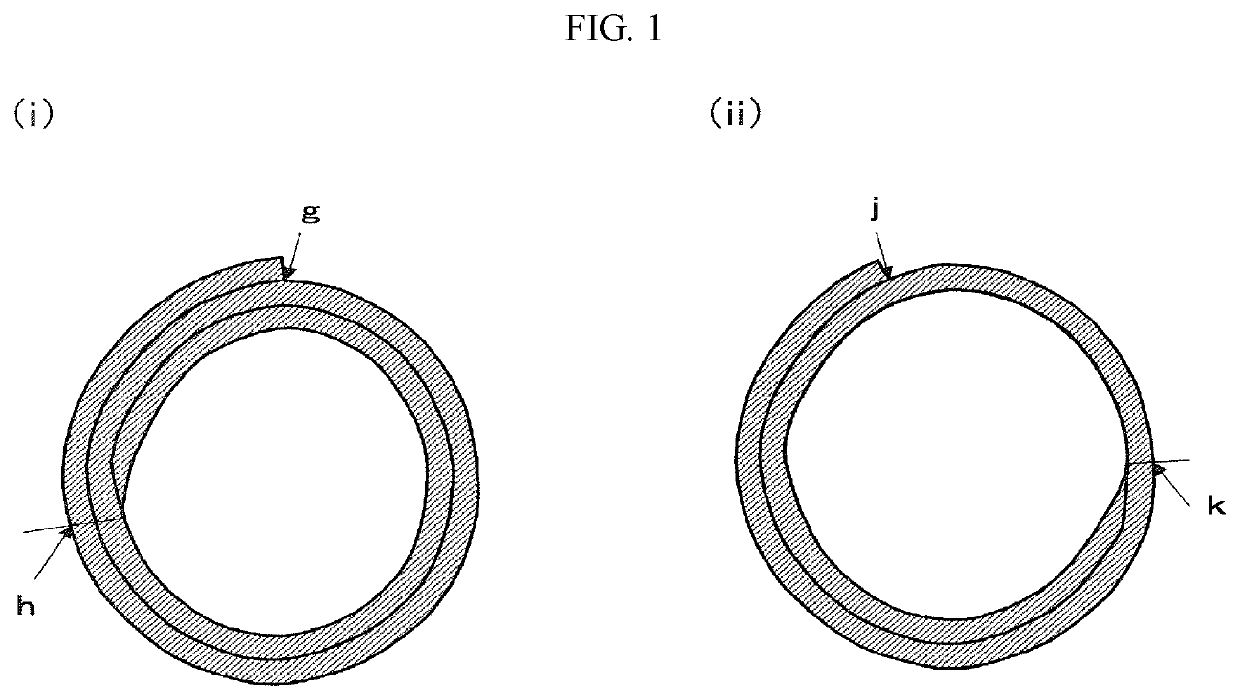Sheet-like decellularized material and artificial blood vessel employing said material
- Summary
- Abstract
- Description
- Claims
- Application Information
AI Technical Summary
Benefits of technology
Problems solved by technology
Method used
Image
Examples
example 1
Preparation of Porcine Aortic Sheet-Like Decellularized Material
[0045]An adventitia of a porcine aorta was completely stripped off, and was cut open to obtain a sheet-like aorta. The obtained sheet in a polyethylene zippered bag was subjected to a high hydrostatic pressure treatment for 15 minutes at 100 MPa in a high pressure processing device for research and development (Dr. CHEF, Kobe Steel, Ltd.), using a physiological saline as a medium. The treated sheet was shaken for 96 hours at 4° C. in a physiological saline containing 20 ppm of the nucleolytic enzyme DNase, followed by a treatment for 72 hours at 4° C. in 80% ethanol, and was lastly washed for 2 hours at 4° C. in a physiological saline, to obtain a porcine aortic sheet-like decellularized material.
example 2
Preparation of Porcine Aortic Decellularized Artificial Blood Vessel
[0046]The porcine aortic sheet-like decellularized material prepared in Example 1 was cut and shaped to 24 mm×100 mm. A biological adhesive fibrin glue was applied to the surface on the medial tissue side of the porcine aortic sheet-like decellularized material, and the porcine aortic sheet-like decellularized material was rolled twice on a core member of a PTFE tube having an outer diameter of 3.0 mm in such a manner that the intimal tissue was inside after formation of the artificial blood vessel, and the porcine aortic sheet-like decellularized material was pressed and shaped for 5 minutes. It was immersed in a physiological saline, and the PTFE tube of the core member was removed, and both ends were cut to prepare an artificial blood vessel of 100 mm×3 mmΦ. Rolling and shaping were performed so that the flow path was formed in the same direction as the flow path of the aorta.
example 3
Preparation of Porcine Pericardial Sheet-Like Decellularized Material
[0049]A collected porcine pericardial sheet in a polyethylene zippered bag was subjected to a high hydrostatic pressure treatment for 15 minutes at 100 MPa in a high pressure processing device for research and development (Dr. CHEF, Kobe Steel, Ltd.), using a physiological saline as a medium. The treated sheet was shaken for 96 hours at 4° C. in a saline containing 20 ppm of the nucleolytic enzyme DNase, followed by a treatment for 72 hours at 4° C. in 80% ethanol, and was lastly washed for 2 hours at 4° C. in a physiological saline, to obtain a porcine pericardial sheet-like decellularized material.
PUM
 Login to View More
Login to View More Abstract
Description
Claims
Application Information
 Login to View More
Login to View More - R&D
- Intellectual Property
- Life Sciences
- Materials
- Tech Scout
- Unparalleled Data Quality
- Higher Quality Content
- 60% Fewer Hallucinations
Browse by: Latest US Patents, China's latest patents, Technical Efficacy Thesaurus, Application Domain, Technology Topic, Popular Technical Reports.
© 2025 PatSnap. All rights reserved.Legal|Privacy policy|Modern Slavery Act Transparency Statement|Sitemap|About US| Contact US: help@patsnap.com

